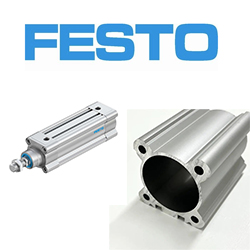Mold Filling Simulation and Smart Manufacturing under Industry 4.0 (2): Smart Injection Machines & Their Adjustment Principles
Tober Sun
From the concept of integrating virtuality and reality in Industry 4.0 mentioned in the previous chapter, we understand that machine movement is highly relevant with product quality in injection molding. To attain accurate mold filling analysis, we must consider the machine movements, including the screw acceleration and deceleration in the injection process, the machine reaction at the moment when filling turns into packing, and the machine’s protection behaviors for preventing the injection pressure from being too high.
Currently, the core of molding equipment is injection machines. Therefore, under Industry 4.0, the smart machine applications are majorly on injection machine design. The applications include: 1. The injection machine sends back the production management data; 2. The data exchange among the injection machine and the peripheral assistant machines; 3. The smart adjustment to the molding process. The smart adjustment on the molding process, especially, dictates the future of the injection molding industries. The reason is, until now, the development in this industry still highly relies on people’s experience. Neither mold filling analysis nor smart machines can substitute people’s experience. Nevertheless, along with the data induction and management as well as production information collection, we are not far from automatic trial molding. In this article, we will introduce how injection machine manufacturers apply the injection information collected from injection process to enhance product quality stability.
To increase product quality stability, we can properly adjust molding parameters to offset the quality instability caused by the environment variation. Based on their experience, molding professionals know they sometimes must adjust molding parameters to offset the effects of environment temperature in the morning and evening as well as in summer and winter. The concept of smart machines is to directly change the molding conditions at every molding cycle through scientific methods. Currently, the major technology includes Engel (iQ flow control), Wittmann Battenfeld (HiQ-Flow) and KraussMaffei (APC). Take Battenfeld HiQ-Flow as an example, they set up the upper and lower limits of the injection pressure variation of the qualified product range by monitoring the injection pressure, that is, taking the qualified product’s injection pressure curve as the standard. If the mold, melt viscosity and injection pressure all remain the same, the injection pressure does not change. However, if the mold environment (the runner balance of a multiple-cavity mold or the mold temperature) or melt viscosity (melt temperature uniformity, degradation and batch difference) changes, the injection pressure curve will fall out of the qualified product range even under the same injection speed. It will cause unstable product quality.
Injection pressure is the product of shear rate and viscosity. If we observe a decrease in the injection pressure, while the machine injection speed remains the same, it means the melt viscosity has decreased. Usually it is caused by the increase of temperature. Meanwhile, the melt density decreases due to higher temperature. Therefore, if we want to keep the product weight the same, the injected volume/stroke should increase, or the VP switch point should be deferred. How much it should be deferred depends on how much this molding pressure deviates from the standard line of the qualified products. Injection machine manufacturers have different methods for this issue. Battenfeld’s adjustment is according to the equality of pressure and total area under the position, that is, the equality of the work of injection during the injection process. KraussMaffei’s adjustment is according to the compensation of the PVT properties. It means the material density (specific volume) changes as the temperature changes knowing that the injection pressure is different from the baseline. To compensate for the material density change, we must modify the VP switch point and packing pressure so that the product weight can remain the same. Through this method we must input the type of plastic used in the controller interface so that the correct PVT relationship can thus be decided from its databank. The following table summarizes the process adjustment technology from major manufacturers:
| Manufacturer | Adjustable Molding Conditions | The Environment Variation to be Eliminated |
| Engel | VP switch point | Viscosity |
| Wittmann Battenfeld | VP switch point, packing pressure, screw plasticization and the closing speed of the non-return valve | Viscosity and the cushion area process |
| KraussMaffei | VP switch point and packing pressure | Viscosity and the non-return valve |
We can understand that the injection machine has transformed from a simple provider of melt kinetic energy into the role as a sensor. We can also understand how the melt is injected into the mold so that we can further adjust the process for the melt behaviors under different temperatures and pressures. This helps us to achieve the goal of realizing smart machines. The immediate adjustment during production can be realized as “Predictive Manufacturingâ€. According to Dr. Jay Lee again, predictive manufacturing means not only to create the value of manufacturing but also to add the “introspection†function to the manufacturing process. In other words, the whole system, including the equipment itself, has to take immediate actions to the changes in the manufacturing process. On the Cross-Strait CEO Summit 2018,Dr. Jay Lee, who has just taken over the position of the vice president of Foxconn Industrial Internet (FII), said, “smart manufacturing is not born to solve problems, but is born to perceive and predict the problems, and solve the problems that we could not solve in the past.†Therefore, we can say that the era of Industry 4.0 is the era of predictive manufacturing.
 |
Dr. Tober Sun
|
FESTO standard Aluminum Pneumatic Cylinder Tube for Pneumatic Cylinder

FESTO cylinder is composed of Cylinder Barrel, end cover, piston, piston rod, and sealing components.
The inner diameter of the FESTO cylinder barrel represents the magnitude of the cylinder output force. The piston should slide smoothly back and forth inside the cylinder, and the surface roughness of the cylinder should reach Ra0.8um. For steel pipe cylinders, the inner surface should also be plated with hard chromium to reduce frictional resistance and wear, and to prevent rusting. In addition to using high carbon steel pipes, the cylinder barrel material is also made of high-strength aluminum alloy and brass. Small cylinders use stainless steel pipes. Cylinders with magnetic switches or cylinders used in corrosion-resistant environments should use materials such as stainless steel, aluminum alloy, or brass for the cylinder barrel. FESTO cylinder piston adopts a combination sealing ring to achieve bidirectional sealing, and the piston and piston rod are connected by rivets without nuts.
FESTO cylinder end caps are equipped with intake and exhaust ports, and some also have buffer mechanisms inside the end caps. The end cover on the rod side is equipped with a sealing ring and a dust ring to prevent air leakage from the piston rod and prevent external dust from entering the cylinder. A guide sleeve is installed on the end cover of the rod to improve the guiding accuracy of the cylinder, withstand a small amount of lateral load on the piston rod, reduce the downward bending of the piston rod when it extends, and extend the service life of the cylinder. The guide sleeve usually uses sintered oil containing alloy and forward leaning copper castings. In the past, malleable cast iron was commonly used for end caps. To reduce weight and prevent rust, aluminum alloy die-casting was often used, and brass material was used for micro cylinders.
FESTO cylinder piston is a pressurized component in the cylinder. To prevent air leakage between the left and right chambers of the piston, a piston sealing ring is installed. The wear-resistant ring on the piston can improve the guidance of the cylinder, reduce the wear of the piston sealing ring, and reduce frictional resistance. Wear resistant rings are made of materials such as polyurethane, polytetrafluoroethylene, and synthetic resin for fabric clamping. The width of the piston is determined by the size of the sealing ring and the necessary length of the sliding part. The sliding part is too short, which can easily cause early wear and jamming. The materials commonly used for pistons are aluminum alloy and cast iron, while pistons for small cylinders are made of brass. The FESTO cylinder piston rod is the most important load-bearing component in the cylinder. High carbon steel is usually used, with a surface treated with hard chrome plating, or stainless steel is used to prevent corrosion and improve the wear resistance of the sealing ring. FESTO cylinder seals: The sealing of components in rotary or reciprocating motion is called dynamic sealing, while the sealing of stationary parts is called static sealing.
Festo Pneumatic Cylinder Tubing,Festo Pneumatic Cylinder Tube,Festo Pneumatic Cylinder Pipe,Festo Pneumatic Cylinder
Foshan Weiyingjia Technology Co., Ltd , https://www.wyspneumatic.com